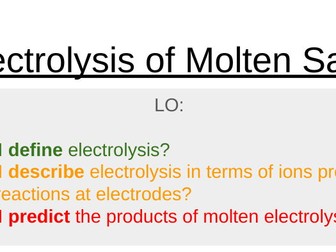
Electrolysis of Molten Salts
Here are slides to go through electrolysis of molten salts.
It is the first lesson that I use in a series of lessons on electrolysis.
It has a 4 quick questions revision starter, examples to model and practise, a whiteboard quiz and plenary questions to confirm that progress has been made!

